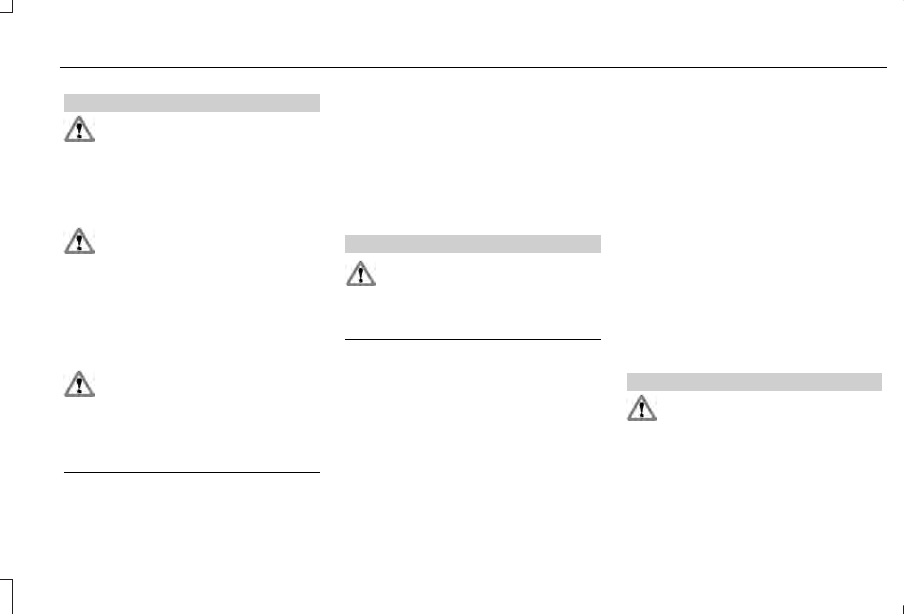Lincoln MKC (2019 year). Manual - part 21

WARNINGS
The use of non-recommended tires
and wheels could cause steering,
suspension, axle, transfer case or power
transfer unit failure. If you have
questions regarding tire replacement,
contact your authorized dealer as soon
as possible.
To reduce the risk of serious injury,
when mounting replacement tires
and wheels, you should not exceed the
maximum pressure indicated on the
sidewall of the tire to set the beads
without additional precautions listed
below. If the beads do not seat at the
maximum pressure indicated,
re-lubricate and try again.
When inflating the tire for mounting
pressures up to 20 psi (1.38 bar)
greater than the maximum pressure on
the tire sidewall, the following
precautions must be taken to protect
the person mounting the tire:
•
Make sure that you have the correct
tire and wheel size.
•
Lubricate the tire bead and wheel
bead seat area again.
•
Stand at a minimum of 12 feet (3.66
meters) away from the wheel and tire
assembly.
•
Use both eye and ear protection.
WARNING
Always inflate steel carcass tires
with a remote air fill with the person
inflating standing at a minimum of 12 ft
(3.66 m) away from the wheel and tire
assembly.
Important: Remember to replace the
wheel valve stems when the road tires
are replaced on your vehicle.
It is recommended that the two front
tires or two rear tires generally be
replaced as a pair.
The tire pressure sensors mounted in
the wheels (originally installed on your
vehicle) are not designed to be used in
aftermarket wheels.
The use of wheels or tires not
recommended by Ford Motor Company
may affect the operation of your tire
pressure monitoring system.
If the tire pressure monitoring system
indicator is flashing, your system is
malfunctioning. Your replacement tire
might be incompatible with your tire
pressure monitoring system, or some
component of the system may be
damaged.
Safety Practices
WARNINGS
If your vehicle is stuck in snow,
mud or sand, do not rapidly spin
the tires; spinning the tires can tear the
tire and cause an explosion. A tire can
explode in as little as three to five
seconds.
327
MKC (TME) Canada/United States of America, enUSA, Edition date: 201802, First Printing
Wheels and Tires